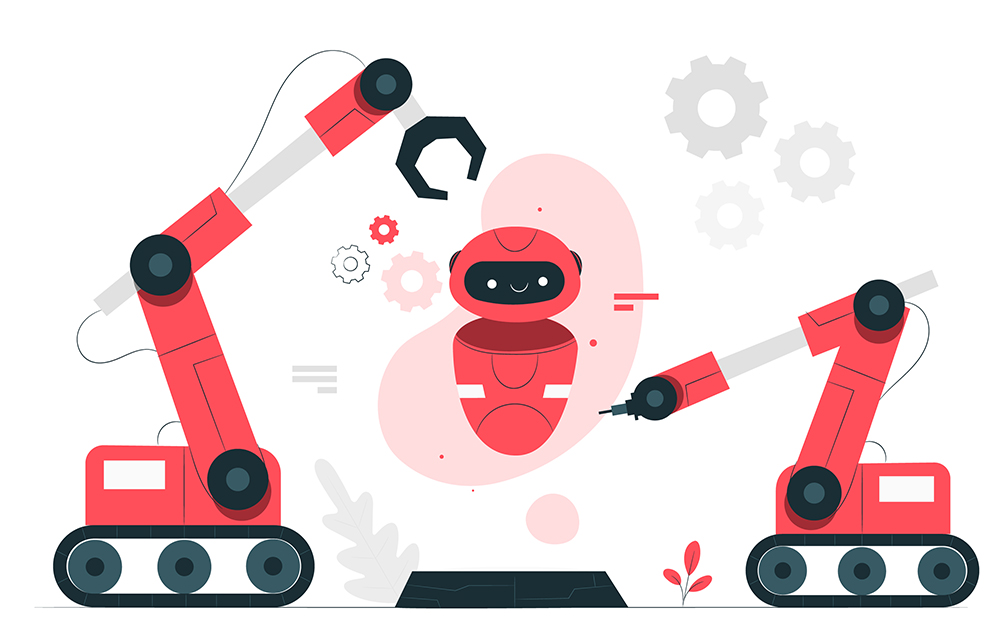Introduction
Employee morale is crucial for a thriving workplace. It affects productivity, job satisfaction and overall organizational success. High morale boosts engagement and performance, while low morale can lead to decreased productivity and higher turnover.
When employees are motivated and satisfied, they contribute more effectively and collaborate better, driving business growth. Conversely, poor morale can result in disengagement, increased turnover, and a negative work environment.
This blog provides practical strategies to enhance employee morale, focusing on creating a positive work environment, effective communication, recognition, development and work-life balance. By implementing these approaches, organizations can foster a more engaged and productive workforce.
Creating a Positive Work Environment
A positive work environment is foundational to nurturing high employee morale. It encompasses both the physical workspace and the cultural aspects of the organization. Here’s how to create an environment that fosters positivity and productivity:
1. Optimize the Physical Workspace
Comfort and Ergonomics:
- Ergonomic Furniture: Invest in ergonomic chairs, adjustable desks and other office equipment designed to enhance comfort and reduce physical strain. This helps prevent discomfort and potential health issues, contributing to a more pleasant work experience.
- Climate Control: Ensure the workspace is adequately ventilated and temperature-controlled. A comfortable climate can reduce distractions and enhance focus and productivity.
Aesthetics and Design:
- Bright and Inviting Spaces: Use natural light, vibrant colors and aesthetically pleasing decor to create a visually appealing workspace. A well-designed environment can boost mood and energy levels.
- Personalization: Allow employees to personalize their workstations with plants, artwork, or personal items. Personal touches can make employees feel more at home and valued.
2. Foster a Supportive Culture
Inclusivity and Diversity:
- Inclusive Practices: Promote a culture of inclusivity where all employees feel respected and valued, regardless of their background. Implement diversity training and create policies that support an equitable workplace.
- Celebrate Differences: Recognize and celebrate diverse cultural events and milestones. This fosters a sense of belonging and appreciation among employees.
Company Values and Vision:
- Clear Communication: Clearly articulate the company's values and vision. When employees understand and resonate with the organization’s goals, they feel more connected and motivated.
- Lead by Example: Ensure that leaders model the company’s values in their behavior and decision-making. Leadership that embodies these values sets a standard for the entire organization.
3. Promote Well-Being and Work-Life Balance
Health and Wellness Initiatives:
- Wellness Programs: Offer programs that support physical and mental health, such as gym memberships, stress management workshops or on-site wellness facilities. Healthy employees are more likely to be engaged and productive.
- Mental Health Support: Provide resources for mental health support, including counseling services and stress-relief activities. Addressing mental well-being helps reduce burnout and improves overall morale.
Flexible Work Arrangements:
- Remote Work Options: Allow employees to work from home or other remote locations when possible. Flexibility in where and how work is performed can help employees better balance their personal and professional lives.
- Flexible Hours: Offer adjustable working hours to accommodate different needs and lifestyles. Flexibility can lead to higher job satisfaction and reduced stress.
4. Encourage Open and Respectful Communication
Regular Feedback:
- Constructive Feedback: Provide regular, constructive feedback to employees. Recognizing achievements and addressing areas for improvement in a supportive manner helps employees feel valued and guided.
- Open-Door Policy: Maintain an open-door policy where employees feel comfortable discussing concerns or ideas with management. Transparent communication fosters trust and a collaborative work environment.
Team Building:
- Collaborative Activities: Organize team-building activities and social events to strengthen relationships and improve team dynamics. Building a sense of camaraderie can enhance cooperation and morale.
- Supportive Team Culture: Encourage a culture of mutual support and respect among team members. Positive interactions and teamwork contribute to a more harmonious and productive workplace.

Supporting Employee Development
Investing in employee development is crucial for maintaining high morale and ensuring that employees feel valued and empowered. When employees see opportunities for growth and advancement, they are more likely to be engaged, motivated and committed to their roles. Here’s how to effectively support employee development:
1. Provide Training and Skill Development
Ongoing Training Programs:
- Professional Skills: Offer training sessions that enhance job-specific skills and keep employees updated with the latest industry trends. This could include workshops, seminars, or online courses that focus on technical competencies and industry knowledge.
- Soft Skills: Invest in training that develops essential soft skills such as communication, leadership and problem-solving. These skills are crucial for personal and professional growth and can improve overall team dynamics.
Certification and Education Support:
- Certification Programs: Support employees in obtaining relevant certifications or licenses that can advance their careers. This could involve covering the costs of certification exams or providing study resources.
- Educational Assistance: Offer tuition reimbursement or financial assistance for employees pursuing further education related to their field. This demonstrates a commitment to their long-term career goals and enhances their expertise.
2. Create Clear Career Pathways
Career Development Plans:
- Goal Setting: Work with employees to set clear, achievable career goals and outline a development plan to reach them. This plan should include milestones, required skills and potential opportunities for advancement.
- Career Pathing: Provide a structured career path within the organization, detailing various roles and the skills or experience needed to progress. This helps employees understand how they can advance and what steps they need to take.
Internal Mobility:
- Job Rotation: Implement job rotation programs that allow employees to gain experience in different roles or departments. This broadens their skill set and provides insights into various aspects of the organization.
- Promotion Opportunities: Prioritize internal promotions when possible. Recognizing and advancing existing employees fosters loyalty and demonstrates that the organization values their contributions and growth.
3. Offer Mentorship and Coaching
Mentorship Programs:
- Pairing with Mentors: Establish mentorship programs where experienced employees guide and support less experienced colleagues. Mentors can provide valuable advice, share knowledge and help mentees navigate their career paths.
- Mentorship Training: Provide training for mentors to ensure they are effective in their roles. This includes guidance on how to offer constructive feedback, set goals and support professional development.
Coaching and Development Sessions:
- Individual Coaching: Offer one-on-one coaching sessions to help employees address specific challenges, develop their strengths and achieve their professional goals. Coaching can be tailored to individual needs and career aspirations.
- Development Workshops: Conduct workshops focused on personal development topics such as leadership, time management or strategic thinking. These sessions can enhance employees’ skills and prepare them for future roles.
4. Foster a Culture of Continuous Learning
Encourage Lifelong Learning:
- Learning Resources: Provide access to a variety of learning resources such as online courses, industry journals and professional networks. Encourage employees to engage in self-directed learning and stay current with industry advancements.
- Knowledge Sharing: Promote a culture of knowledge sharing where employees are encouraged to share insights and expertise with their colleagues. This can be facilitated through internal seminars, knowledge-sharing platforms or collaborative projects.
Recognition of Learning Achievements:
- Celebrate Milestones: Recognize and celebrate employees who complete significant training programs or achieve professional milestones. Public acknowledgment of their efforts can boost morale and encourage others to pursue similar development opportunities.
- Incorporate Learning into Performance Reviews: Include learning and development achievements in performance reviews. Acknowledge how employees have applied new skills or knowledge to their roles and how it has contributed to their growth.
5. Support Personal and Professional Goals
Work-Life Integration:
- Personal Development: Support employees in pursuing personal development goals that align with their professional roles. This can include providing flexible work arrangements or time off for personal projects or goals.
- Work-Life Balance: Encourage a healthy work-life balance by offering flexible schedules or remote work options. A balanced life supports overall well-being and can enhance employees’ ability to focus on their professional development.
Also Read: Employee Well-being and its Impact on Productivity
Conclusion
Nurturing employee morale through practical approaches is essential for creating a positive and productive workplace. By focusing on key areas such as developing a supportive work environment, investing in employee development and enhancing work-life balance, organizations can foster higher engagement, satisfaction and overall success.
Committing to these strategies not only benefits employees but also drives organizational growth and resilience. In today’s competitive landscape, prioritizing employee morale is not just beneficial but necessary for long-term success and a thriving workplace culture.





